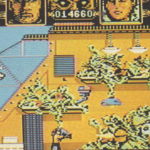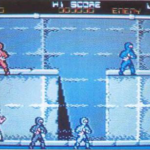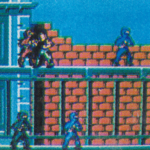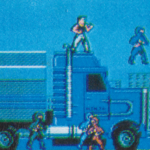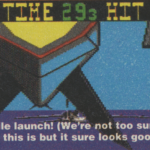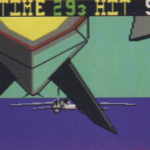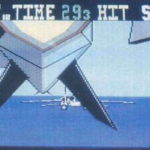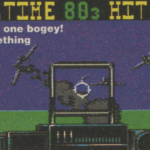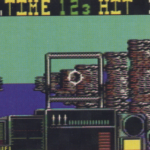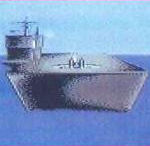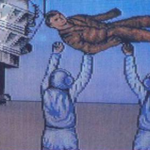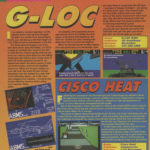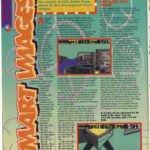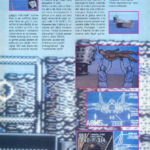With many thanks to Martin Inter, a number of early screens from actual released C64 games such as G-Loc, Dragon Ninja, Batman The Caped Crusader and Hammerfist have been added to this page. These show different sprites (in the case of Dragon Ninja), panels (Hammerfist). in game graphics (Batman) and vastly different and unused scenes (G-Loc).
Firstly, here are the Dragon Ninja, Hammerfist and Batman screens:
Then G-Loc in particular is very interesting, as many of the screens never seemingly made it into the final game. The game view was simplified, and had originally been a bit narrower at the start. Were they mostly just mock ups that the magazines showed?
We showed the screens to developer Jim Smart to see what he could recall, and very kindly he had the following recollections that he has allowed us to share:
Many of those screenshots were taken in the graphics dept, and the graphics were authored on Atari ST. The general giveaway as to whether a shot is a mock-up / source graphics, or actual in-game on C64, is to look at the status bar – where ‘time remaining’ is generally the same on all of the source graphics / mock-ups.
Yes, the in-game shots here show an earlier cockpit ‘dashboard’ that was narrower – I also see it looks static there (no ‘radar’, empty dials, etc). I don’t recall the exact reason why it was made wider, but I suspect it was purely to gain some performance (more static screen area = less to update/redraw every frame).
The static images – the blueprints showing the turbo fan and the sidewinder missile, etc – ended up being in a separate ‘load’, which was effectively just a slideshow. IIRC, being a set of bitmap-mode images, we didn’t have the spare RAM needed to hold them in-memory in the main game ‘load’ – but we felt they should still be included somehow.
Some of these screenshots are Atari ST source-graphics for the in-game cut-scenes, e.g. where the camera zooms out behind the player’s plane. IIRC, there were three of these: one for when the player’s plane gets a damaged wing (which is seen fairly often), one for when an enemy plane comes from behind and launches a missile, and one for the aircraft carrier landing (these latter two are in-game special events, triggered at various stages/levels).
These were particularly memory hungry, on all platforms. I vaguely recall that perhaps not all of these cut-scenes made it into the final release for all of the different platform versions, due to memory constraints – but I don’t remember specifics, it was a long time ago. They were certainly all implemented during the project though, even if they ended up on the cutting room floor due to constraints.
Shortly afterwards…
Ah, I think I remember why the status panel dashboard may have been made wider – aside from screen redraw performance, as already outlined, it may also be so that we could use an interrupt to switch character-set banks between the charset used to draw enemy planes (in the upper part of the screen when in cockpit view), and that used to draw the dashboard.
We had a lot of issues squeezing all the graphics into the C64: if you are not in bitmap mode (which we weren’t) then trying to do a scale-and-rotate sprite game eats through your graphics memory, whether sprites or chars. I recall we used a lot of charset banks, switching between them according to game mode / what was onscreen: main view / all of the larger enemy planes/smoke/etc (smaller objects were sprites), the cockpit dashboard view, the various in-game cut scenes (each of which needed at least one additional charset’s worth of graphics).
Dragon Ninja with its earlier sprites can be downloaded here, but the others are pretty much at large in their earlier incarnations. It would be fantastic to find some of the G-Loc materials, and will ask Stephen Bedser about them as soon as we can.
Martin also highlighted Pitfighter and Chase HQ 2, which we have already covered at the links give.


